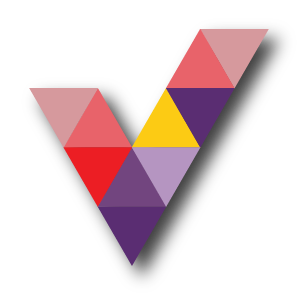Sales Funnel Blueprint: Craft, Capture & Convert

If you've ever felt like your sales efforts are scattered, overly reliant on referrals, or simply not bringing in the results you expected, you're not alone. That was the exact conversation we had at our recent Sales Funnel Blueprint workshop, led by strategist Stephanie Lam and our very own Chief Geek, Lance Cheang.
Held with a group of passionate and curious business owners, marketers, and sales team leads, the workshop was all about helping people rethink the way they attract, capture, and convert leads. And not just in theory, but in practice—with templates, live demos, real-life examples, and even a few laughs.
Start with Clarity: Who Are You Selling To — and Why Should They Care?
One thing became clear right away: most businesses don’t really have a funnel. They have touchpoints, scattered efforts, and hopeful outcomes. But a true funnel is a system. It’s something that brings people in, filters them based on their needs and intent, and nurtures them until they’re ready to buy.
Stephanie walked us through the essentials, starting with your offer. If you can’t clearly say what problem you solve, who you solve it for, and what outcome they’ll get—your funnel won’t even get off the ground. And more importantly, your ideal customer won’t understand why they should pay attention to you.
We also explored DISC profiling as a valuable tool for shaping the way you and your team approach sales. Understanding your DISC profile helps identify your natural sales strengths—and just as importantly, where you might need support. Whether you're a high D (decisive and driven) or a high S (steady and supportive), knowing your type helps ensure you're playing to your strengths rather than burning out trying to fit a mold.
Make Your Landing Page Work Harder Than Your Sales Team
From there, we explored how a well-built landing page does more than just "look nice." It needs to speak to a specific audience, highlight a specific solution, and give visitors a reason to either book a call or opt-in to learn more. But not everyone buys immediately, and that’s where nurturing comes in. Whether it’s through email newsletters, value-packed content, or repurposed case studies, your job is to stay top-of-mind for the moments when your audience is ready to buy.
A landing page should be simple, direct, and focused on one offer. It helps to include both video and text content, since people consume information in different ways. And crucially, it should have a clear call to action that allows visitors to either get in touch or subscribe for future updates.
Outreach with Intention
Another powerful discussion came from the role of LinkedIn and outreach. A funnel that converts isn’t just about waiting for leads to find you. It also means intentionally connecting with the right people, sharing useful content, and engaging in real conversations. Stephanie shared that the best outreach messages are short, relevant, and backed by credibility. That means dropping the generic "here’s what we do" pitch and instead pointing to case studies, testimonials, or even a tailored video.
Lance added a crucial reminder: systems exist to give you freedom. Many SMEs rely heavily on the founder or one top salesperson, but what happens when that person is unavailable? A funnel supported by content, landing pages, automated emails, and CRM workflows means your business can keep growing—even if you take a step back.
Evolving from Traditional to Digital
One thing that stood out during the workshop was how many participants were still relying on older, more manual methods of selling. The workshop wasn’t about throwing those methods away, but about evolving them. Even if you’re not ready to run ads or invest in tools like Sales Navigator, you can still start by optimizing your LinkedIn profile, creating one clear landing page, and setting up a basic nurture sequence.
What You Can Start Doing Now
By the end of the session, there was a clear energy in the room. Not just from the frameworks, but from the realization that "building a funnel" doesn't have to be overwhelming. It can start with one step: writing down your offer clearly, connecting with your ideal client, or building your first landing page.
Here are three practical takeaways you can apply right away:
-
Get clear on your offer: Identify the problem you solve, who you solve it for, and the outcome you deliver.
-
Build a simple landing page with a clear call-to-action and email capture.
-
Start connecting with your Dream 100 clients on LinkedIn and engage with them consistently.
We're putting together a blog series that dives deeper into each part of the funnel with templates, examples, and walkthroughs—so stay tuned.
And to everyone who joined us: thank you. Your questions, stories, and willingness to learn made the workshop what it was. Here's to building better systems that help your business grow (even while you sleep).
